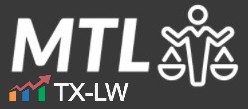The IRS has been sending notices to businesses about Affordable Care Act (“ACA”) penalties. The penalties are often very large in amount and, in many cases, come as a complete suprise to the business owners. This is particularly true for growing businesses that are right around the cutoff for the headcount requirements.
Businesses with 50 or more full-time employees have to comply with the the ACA’s employer mandate requirements. This means that they have to offer employees affordable healthcare options. When employees receive marketplace insurance subsidies and report those on their income tax returns, that triggers the IRS to send notices of these penlaties.
So what rights or remedies does the business have in these situations? Can a business successfully challenge and overturn such assessments? A recent federal court decision addresses these questions–revealing a procedural flaw in how the IRS has imposed these penalties. The Faulk Co. Inc. v. Becerra, No. 4:24-cv-00609 (N.D. Tex. April 10, 2025) case addresses the proper certification procedures required before the IRS can assess an employer shared responsibility payment against a business. Those who have been assessed ACA penalties should take note of this case.
Contents
- 1 Facts & Procedural History
- 2 The Affordable Care Act’s Employer Mandate Structure
- 3 The Enforcement Mechanism: Section 4980H
- 4 What Due Process Rights Are Guaranteed Under ACA §1411?
- 5 How Did the HHS Certification Regulation Change the Process?
- 6 Did Congress Intend a Two-Agency Process for ESRP Assessments?
- 7 Why Would Congress Design This Two-Step Process?
- 8 Was the HHS Certification Regulation Valid?
- 9 What Are the Implications for Employers Facing ESRP Assessments?
- 10 The Takeaway
- 11 Watch Our Free On-Demand Webinar
Facts & Procedural History
The taxpayer in this case is a Texas corporation that provides janitorial services to Texas schools. Prior to 2019, the business offered minimum essential health insurance coverage to its employees as required by the ACA’s employer mandate provisions. In 2019, however, the taxpayer stopped providing this coverage to its employees.
On December 1, 2021, the IRS issued what it called a Letter 226-J to the taxpayer proposing an employer shared responsibility payment (“ESRP”) of $205,621 for the failure to offer health insurance coverage under the ACA. The Letter 226-J purported to serve as a “certification” to the taxpayer prior to the assessment of the ESRP. The taxpayer responded on December 30, 2021, informing the IRS that it disagreed with the proposed assessment and that it was paying the ESRP under protest. On January 28, 2022, the taxpayer filed a refund claim with the IRS for the 2019 ESRP but received no response.
The taxpayer filed this tax litigation case on June 28, 2024. The complaint alleged that the United States Department of Health and Human Services (“HHS”) and the IRS violated the taxpayer’s statutory due process rights by improperly categorizing the Letter 226-J as a “certification” to the taxpayer prior to the assessment of an ESRP. The taxpayer argued that HHS, not the IRS, was required to provide the certification, and that the certification lacked proper notice of potential liability and notice of a right to appeal as required by law.
The Affordable Care Act’s Employer Mandate Structure
The ACA was enacted in March 2010 with the goal of increasing health insurance coverage and decreasing healthcare costs. While it did increase coverage, it also increased healthcare costs. In many instances, it resulted in health insurance policies no longer being offered. This has left businesses in a quandary–with many turning to various alternatives, such as captive self-insurance arrangements, as a means to deal with the ACA.
The minimum coverage requirements for employers is provided in Section 1411 of the ACA, which was codified at 42 U.S.C. §18081. This statute designates HHS as the governing agency. The statute gives HHS exclusive authority to implement its provisions, stating that “The Secretary [of HHS] shall establish a program meeting the requirements of this section.”
The ACA employer mandate applies to businesses employing at least fifty full-time equivalent employees, requiring them to provide minimum health insurance coverage. Congress gave HHS the exclusive authority to effectuate these provisions. The ACA also directs each State to establish a health insurance exchange to operate as a virtual marketplace for health insurance policies. HHS collects and verifies information from employers to facilitate enrollment and ensure compliance with the ACA. If an employer fails to comply, the ACA provides for penalties known as employer shared responsibility payments (“ESRPs”).
The Enforcement Mechanism: Section 4980H
Congress added Section 4980H to the tax code as an enforcement mechanism. This section empowers the IRS to penalize employers through the ESRP excise tax for failing to follow the ACA’s requirements.
Section 4980H specifies that an ESRP may be assessed if two conditions are met:
- An employer “fails to offer its full-time employees… the opportunity to enroll in minimum essential coverage… for any month” as ACA § 1411 dictates
- At least one full-time employee “has been certified to the employer under [ACA § 1411] as having enrolled for such month in a qualified health plan”
The statute does not explicitly state which agency must provide this certification, only indicating that an employer must be “certified… under [ACA §] 1411.” This ambiguity regarding the certification requirement became the central issue in the Faulk case.
What Due Process Rights Are Guaranteed Under ACA §1411?
ACA § 1411 guarantees important due process rights to employers subject to the mandate. The statute establishes that if HHS determines an employer did not meet the minimum coverage requirements, HHS must notify the Exchange. The Exchange must then provide two specific notices to the employer:
- Notice “that the employer may be liable” for an ESRP
- Notice of the employer’s right to appeal
These notice requirements serve as procedural protections before an employer can be subjected to potentially substantial penalties. The importance of these protections is underscored by the fact that ACA § 1411 explicitly directs HHS to conduct a study “to ensure… [t]he rights of employers to adequate due process” are sufficiently protected.
While ACA § 1411 allows HHS to make certain delegations, such as to the Exchange, there is no provision allowing delegation to the IRS for the certification process. The statute only allows the IRS Secretary to be one of many federal officers that may hear an appeal on an individual’s eligibility for exchange subsidies.
How Did the HHS Certification Regulation Change the Process?
In 2013, HHS issued a regulation (45 C.F.R. § 155.310(i)) that appeared to delegate certification authority to the IRS. This regulation provides:
“As part of its determination of whether an employer has a liability under section 4980H of the Code, the Internal Revenue Service will adopt methods to certify to an employer that one or more employees has enrolled for one or more months during a year in a QHP for which a premium tax credit or cost-sharing reduction is allowed or paid.”
In explaining this regulation, HHS stated that the “certification program” was “distinct from the notification specified in [ACA § 1411].” This delegation allowed the IRS to carry out the certification requirement through its Letter 226-J process.
Did Congress Intend a Two-Agency Process for ESRP Assessments?
The court’s analysis in this case focused on whether this delegation of authority was consistent with the statutory framework. The court looked to the text of Section 4980H, which requires that an employee “has been certified to the employer under [ACA § 1411].”
The Supreme Court has stated that the word “under” is a “chameleon” that must draw its meaning from context. Following Supreme Court precedent, the court interpreted “under [ACA § 1411]” to mean “by reason of the authority of” ACA § 1411 – authority that was exclusively given to HHS, not the IRS.
Although the term “certification” doesn’t explicitly appear in ACA § 1411 with respect to the employer mandate, the court determined that Congress likely used “certified” to refer broadly to the two notices guaranteed to employers: notice of potential liability and notice of administrative appeal rights.
The court reasoned that if Congress had merely intended for the IRS to certify an employer independently, there would have been no need for Section 4980H to refer back to ACA § 1411. The statute’s use of the past tense – “has been certified” – suggested that a prior certification must take place before the IRS enters the picture.
Why Would Congress Design This Two-Step Process?
The court suggested there are good reasons why Congress might have wanted to keep the administration of due process in ACA § 1411 close to HHS rather than permit delegation. ESRP penalties can have major consequences for employers–for a company with 500 employees in 2024, the penalty could approach $1.5 million annually.
For businesses in low-margin industries, such as janitorial services like the taxpayer in this case, these penalties can be devastating. The court speculated that Congress may have intended for HHS–the primary agency responsible for overseeing employer compliance with the ACA–to also ensure due process is met before penalties are assessed.
The two-agency process creates an important safeguard: HHS first provides certification (including notices of potential liability and appeal rights), and only after these steps are completed can the IRS assess the ESRP. This separation of functions provides additional protection for employers facing potentially substantial penalties.
Was the HHS Certification Regulation Valid?
Having determined that the IRS cannot issue the certification required by Section 4980H, the court addressed whether the HHS Certification Regulation was valid and enforceable.
The court concluded that the regulation exceeded HHS’s statutory authority. Under the Administrative Procedure Act, courts can “hold unlawful and set aside agency action, findings, and conclusions found to be… arbitrary, capricious, an abuse of discretion, or otherwise not in accordance with the law.”
Since ACA § 1411 does not authorize HHS to delegate certification authority to the IRS, and nothing in Section 4980H grants independent certification power to the IRS, the court held that 45 C.F.R. § 155.310(i) should be set aside as void and unenforceable.
What Are the Implications for Employers Facing ESRP Assessments?
The court’s ruling has significant implications for employers who have been assessed ESRPs by the IRS. If the IRS assessed an ESRP without proper certification from HHS (which would include notice of potential liability and notice of appeal rights), that assessment may be invalid under the court’s interpretation of the statutes.
For the taxpayer in this case, the court ordered the IRS to refund the full $205,621.71 ESRP that the taxpayer had paid under protest. The court also set aside the HHS Certification Regulation as void and unenforceable.
This ruling opens the door for other employers to challenge ESRP assessments that did not follow the proper certification process through HHS. Employers who have paid ESRPs based on IRS Letter 226-J certifications may have grounds to seek refunds based on the reasoning in the this case.
For businesses currently facing proposed ESRP assessments, the ruling suggests they should consider whether they received proper certification from HHS before the IRS assessment. Without such certification, they may have strong grounds to challenge the assessment through IRS tax collections processes or tax litigation.
The Takeaway
This case provides a path forward for businesses that have these penalties. There is a significant procedural flaw in how ACA employer mandate penalties have been assessed by the IRS. The HHS must first provide certification to employers (including notice of potential liability and appeal rights), and only then can the IRS assess the ESRP. When this sequence isn’t followed, the resulting tax assessment may be invalid and refundable. This ruling potentially impacts many businesses who have been assessed or paid ESRP penalties based solely on IRS Letter 226-J notices without proper HHS certification.
Watch Our Free On-Demand Webinar
In 40 minutes, we'll teach you how to survive an IRS audit.
We'll explain how the IRS conducts audits and how to manage and close the audit.


